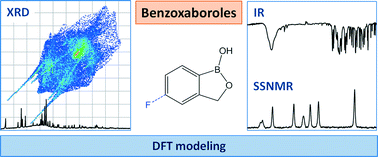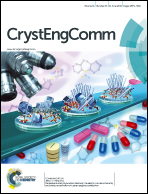A combined experimental-computational study of benzoxaborole crystal structures†
Abstract
Benzoxaboroles are organoboron molecules which are gaining growing interest in different fields, notably for the development of new drugs. However, extensive characterization of these molecules in the solid state is still lacking. Here, questions related to the structure and spectroscopic signatures of crystalline benzoxaborole phases are thus addressed, using a combined experimental-computational approach. Two simple benzoxaboroles were studied: 1,3-dihydro-1-hydroxy-2,1-benzoxaborole (denoted as BBzx) and 5-fluoro-1,3-dihydro-1-hydroxy-2,1-benzoxaborole (also referred to as AN2690, a newly developed antifungal drug). First, the crystal structures of AN2690 and BBzx at room temperature are discussed, emphasizing the intermolecular interactions which play an important role in their formation. Then, results of IR and multinuclear (1H, 11B, 13C and 19F) solid state NMR characterization are presented, together with density functional theory (DFT) calculations which were carried out to assist in the interpretation of the spectra. Finally, the influence of polymorphism and anisotropic thermal expansion properties of the crystal structures on the NMR parameters of BBzx and AN2690 is discussed.


 Please wait while we load your content...
Please wait while we load your content...